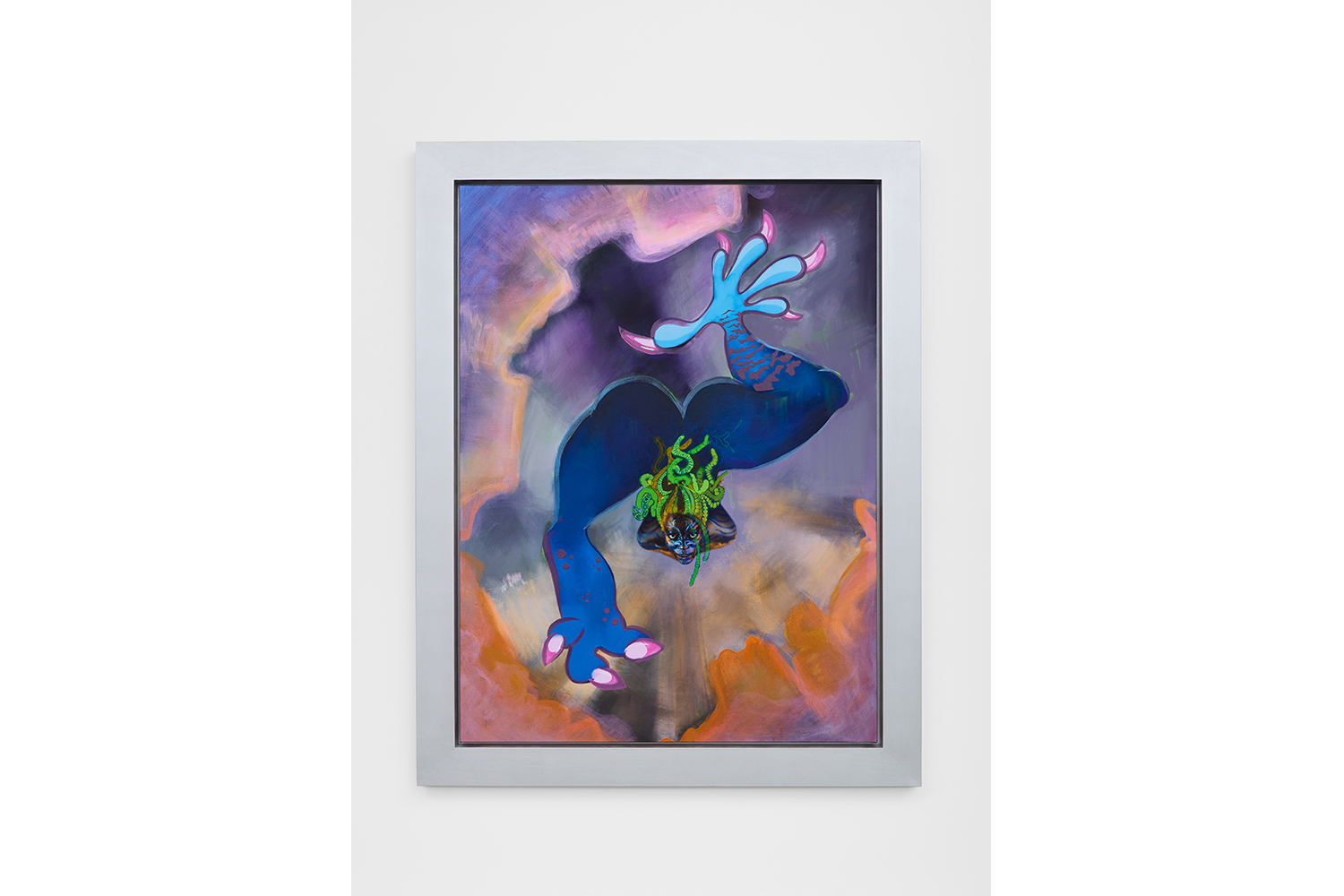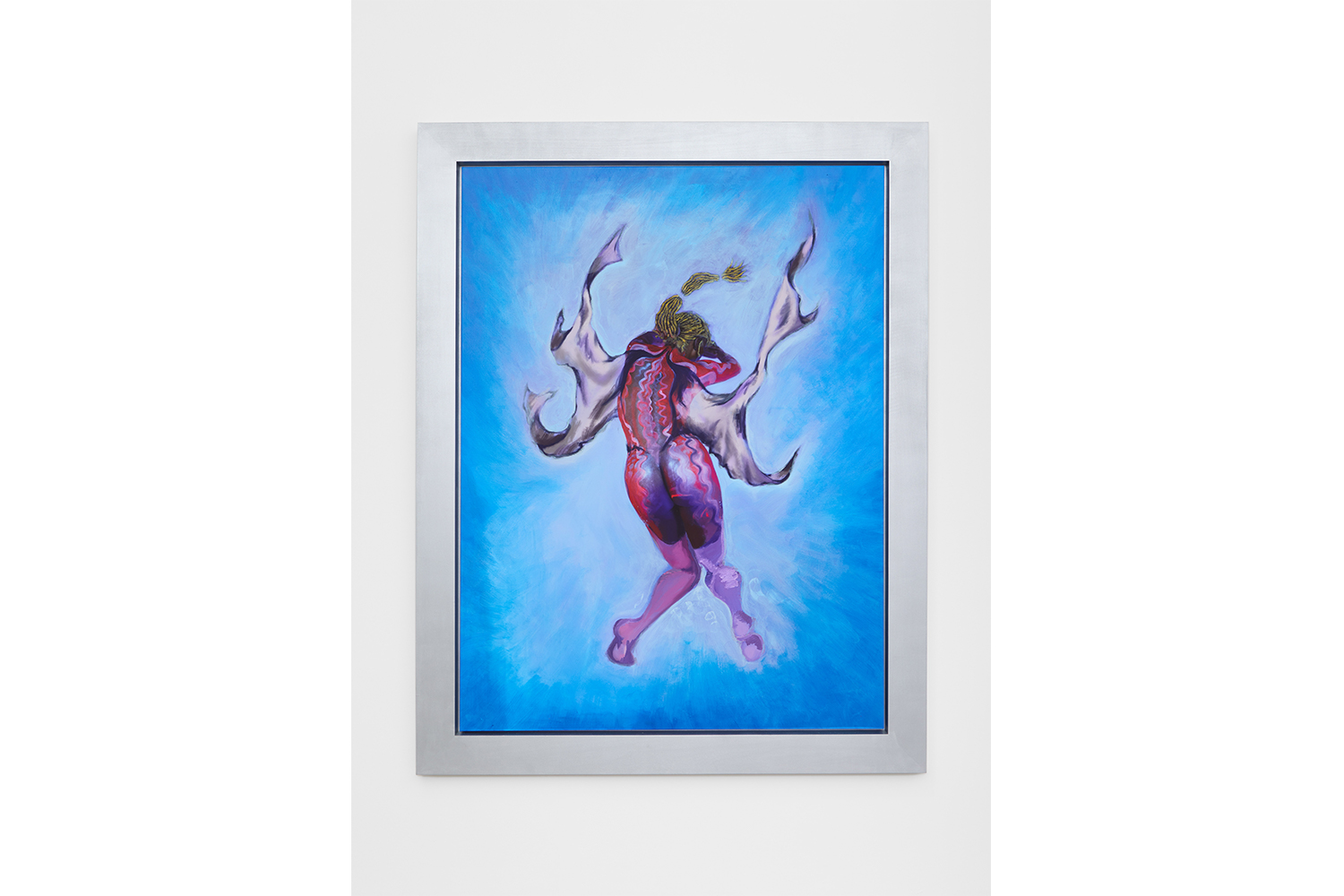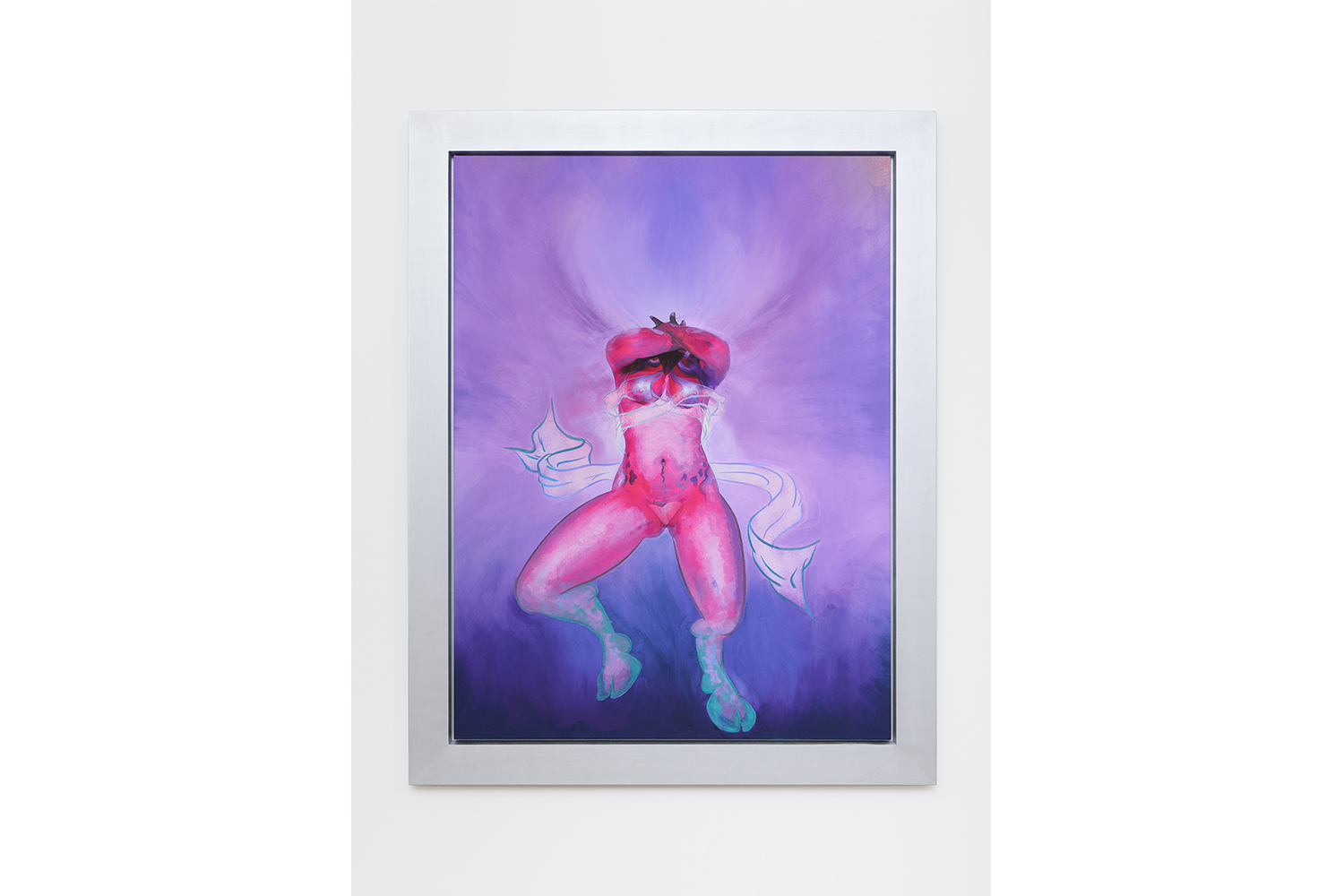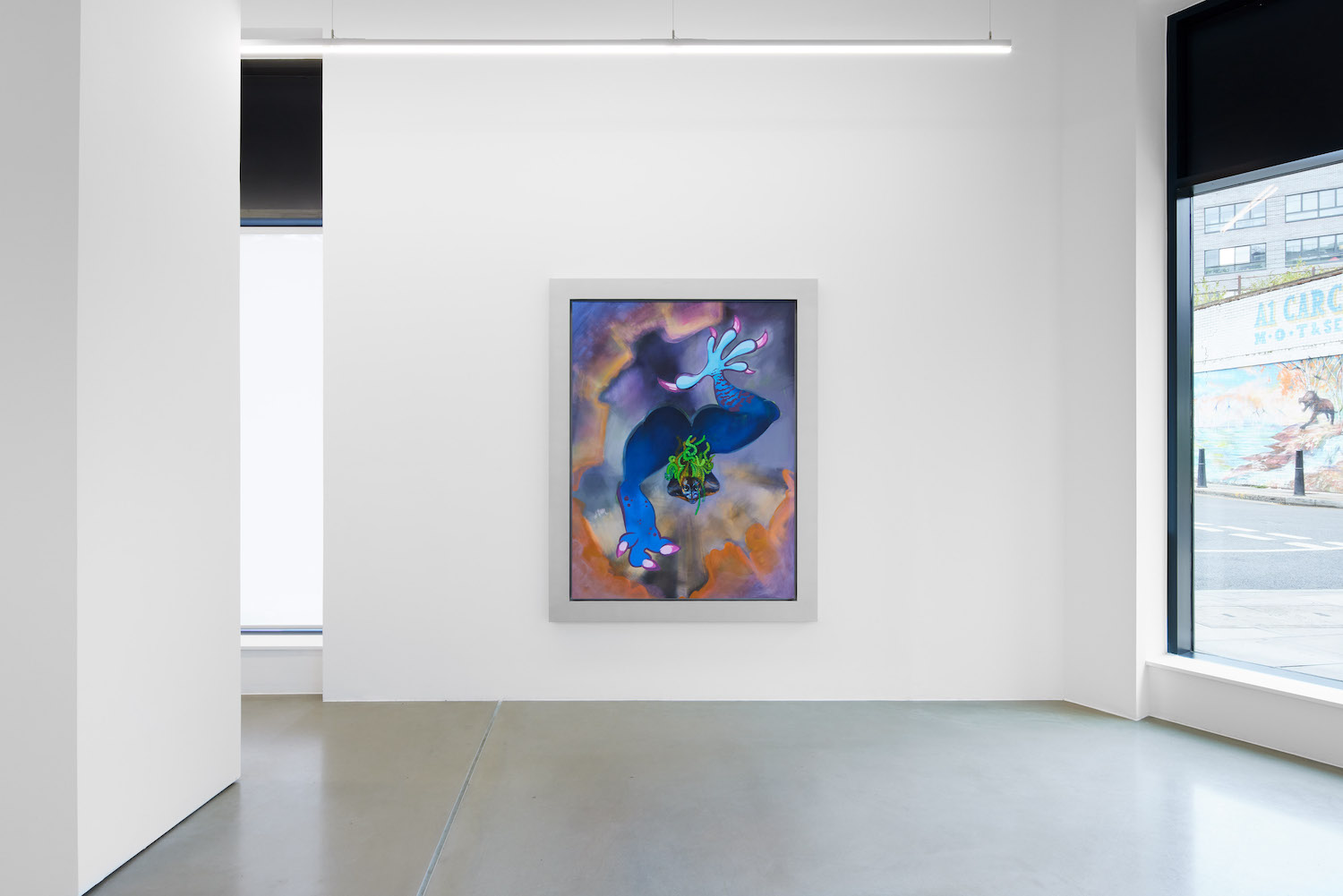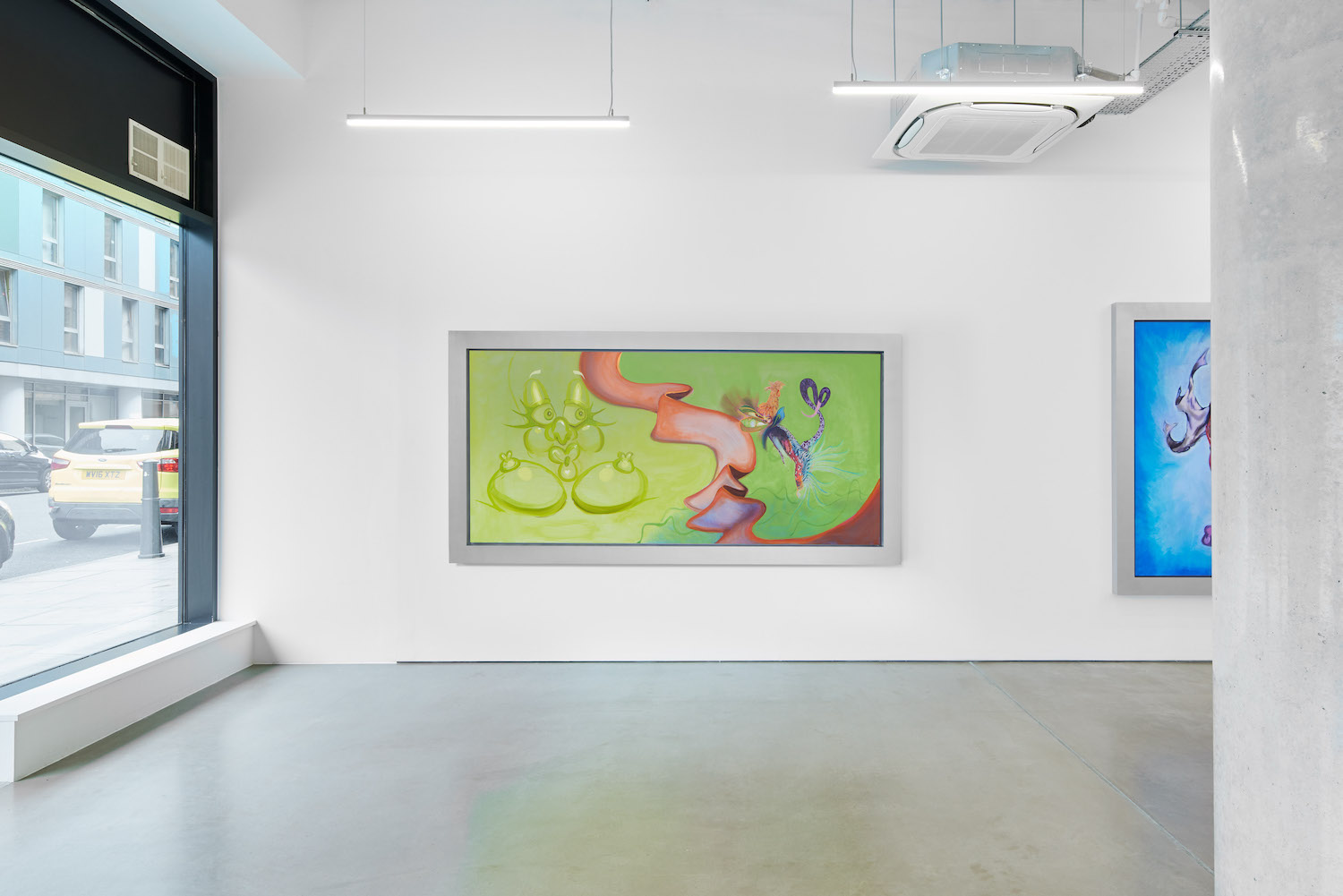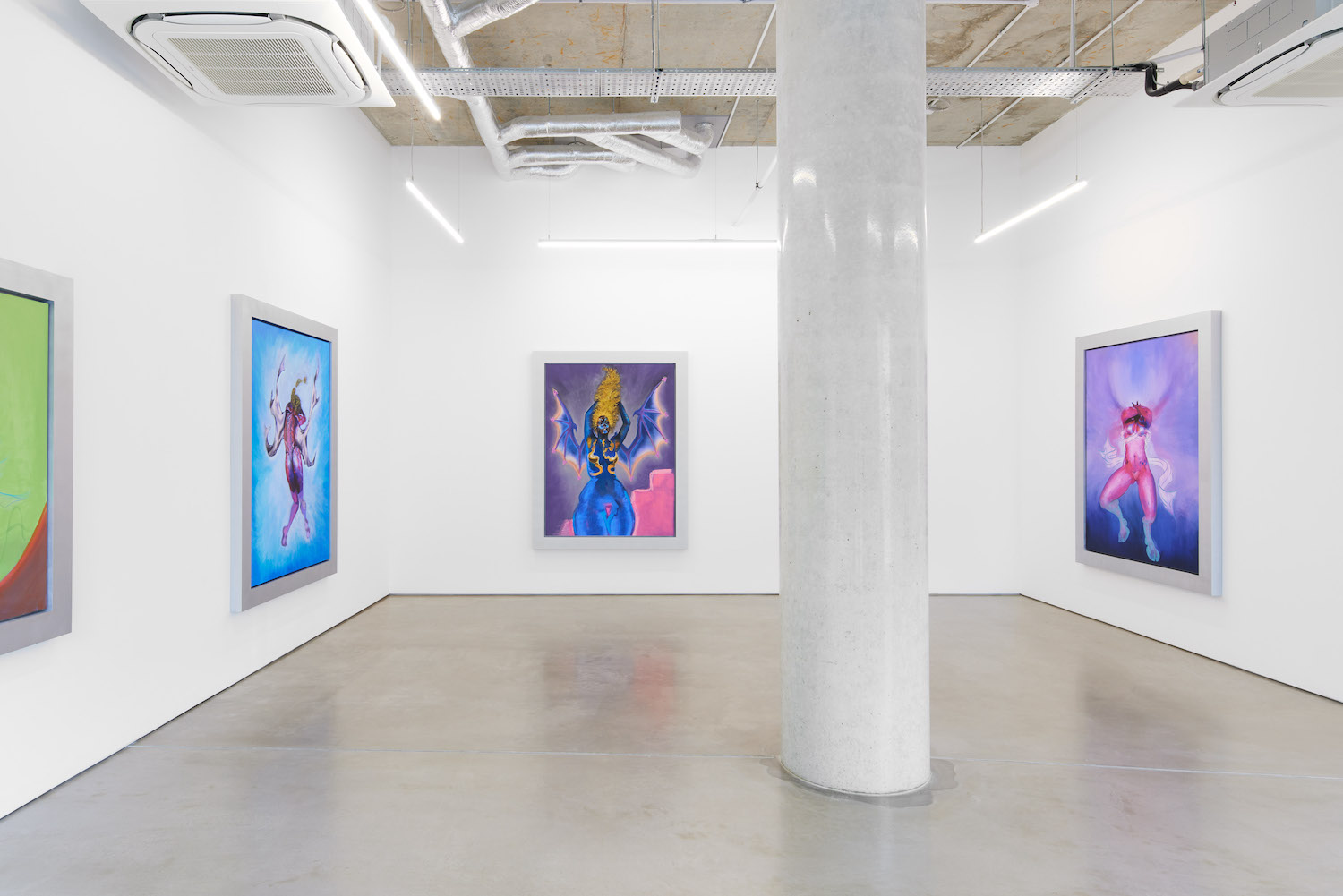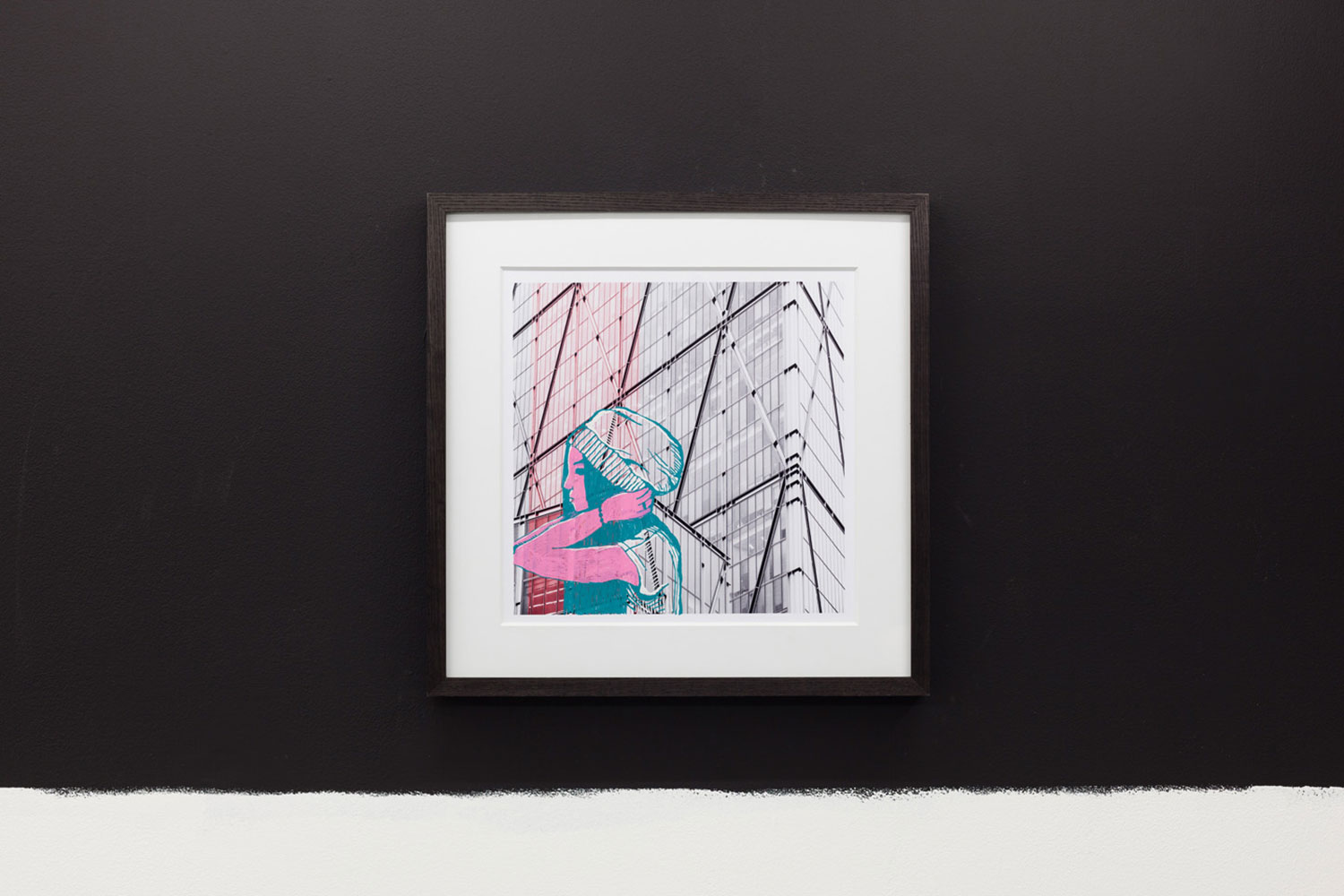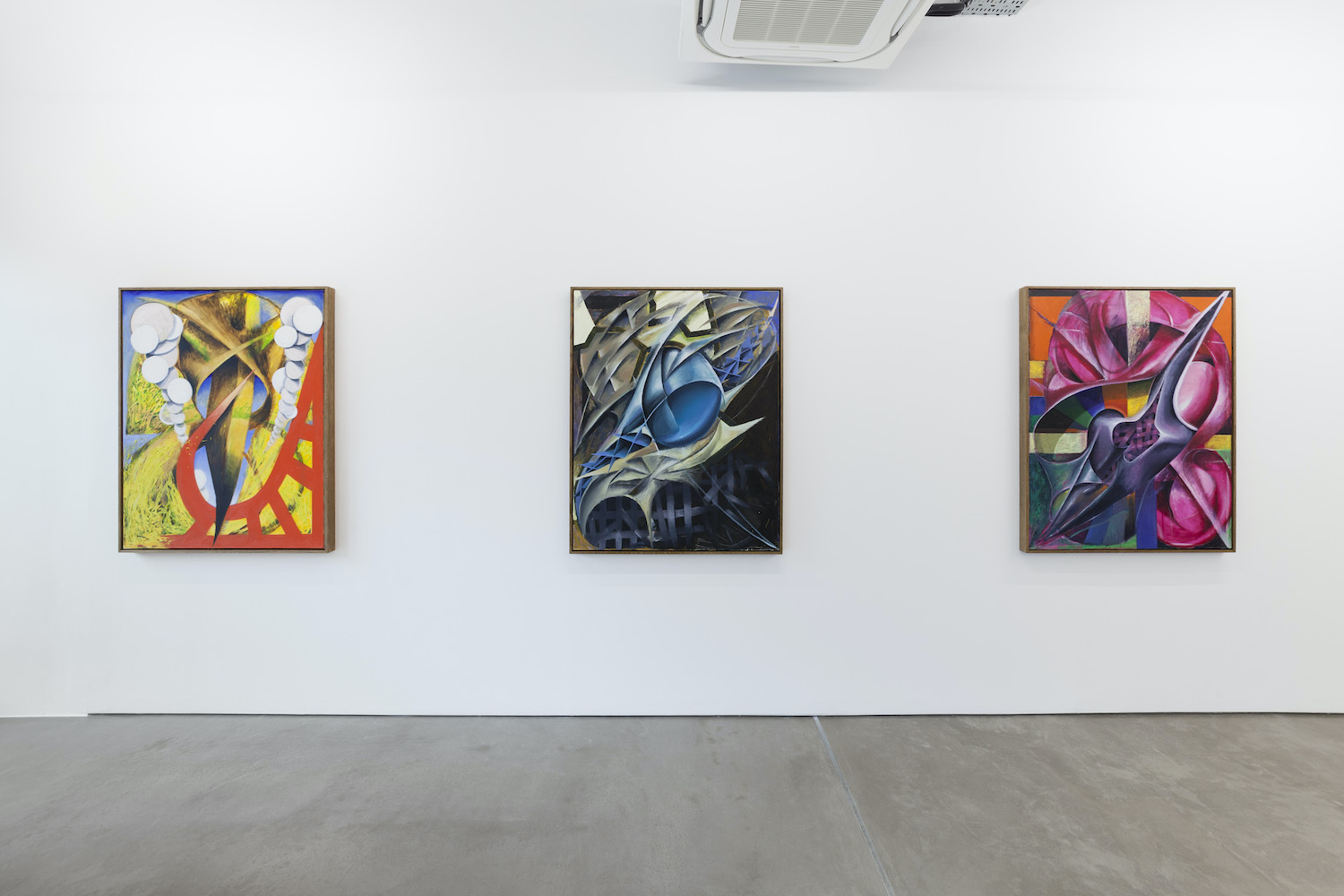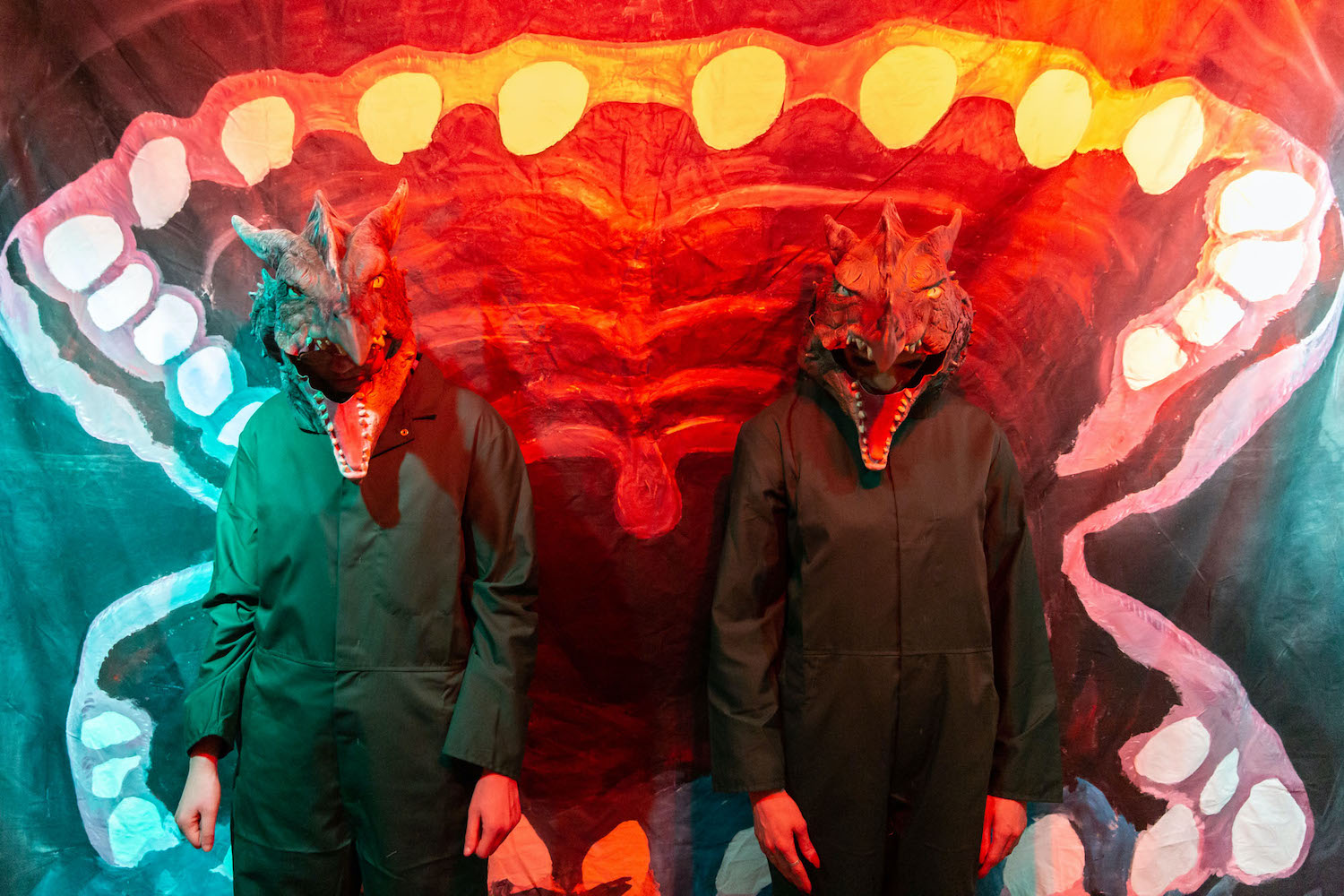Even in description there is a kind of consumption; it is, in part, an inevitable fate for a review: to eat and get eaten. Riddling economies of visibility with optical traps and figural swerves, the morphological richness of Juliana Huxtable’s work evades an easy swallow. Aggravating the matrices of terminology despite the saturation of a millennial keyword like “fluidity,” one could say, to take the guttural logic further, that Huxtable’s work sticks in the throat.
Five large acrylic paintings comprise “AKIMBO SPITTLE,” Huxtable’s second solo exhibition at Project Native Informant. Each contains a self-portrait taken in her studio, printed and overpainted. The effects are creaturely, an interspecies amorphicity that is also curiously precise: batwinged, taloned, and cloven-hooved majesty. The plash of zoosexual horn and raptorial cosplay are fully emulsified into Huxtable’s figuration that is, in its conspiratorial and devilish mood with other species, mythologies, crazes, fetishes, and fears, a more palpable means of processing subjectivity.
In these paintings, Huxtable’s agile distortion and elastication of her own image appears to hinge on expanded empathy as a political paradigm. Painting her body and posing for the camera, styling becomes an embodied form of poetry: full enfleshment of mutative textuality. Like bats, these are niches folded in the night, the paintings a dazzle against the sheer hysteria of our commodifying visibility complex. To quote McKenzie Wark: “The cis gaze reads the trans body through a grid marked by a lust-disgust axis and a pity-envy axis. Pity and disgust are the public, daytime cis gaze; envy and lust are their private, nighttime doubles.” Wark continues: “The insomnia of reason breeds monsters.”
The spine might turn prehensile in A STRETCH (all 2022), in which a blowout of ice blue backlights Huxtable. From behind, she arches as large, billowy wings unfurl from her shoulder blades, rippling like pewter flames from a split chrysalis. In the chartreuse-drenched POST, with a beacon of hair and feline-serpentine tail, she’s a spectrum of animal camouflage: cheetah, tiger, and zebra print — fissuring into lines like frazzled hair, erratic centipedal legs, or some wild electrical charge. Her kittenish, asymmetric gaze stretches cartoonish, with features distorting into ballooning goofball teeth and a wicked, cantankerous eyeball. It’s an animated malevolency mirrored by the smoochy slime-green, bombastic, and bosomed cartoon face, whose lower lip, pouted and besotted, is highlighted with a sugar-white love heart.
In a haze of violaceous smoke, there are nebulous strokes where wings, perhaps, ought to flourish. Faceless, she clasps her throat, her torso and vulva hot pink, her cloven hooves glowing turquoise. In another: gargoyle wings radiate a midnight-blue gradient, each finger tapering into a teardrop heart. For SCALING, Huxtable’s upward gaze sears through the oily sea-sparkle of her face — etched with thick, valiant eyelashes and lavished in gold and indigo tendrils. Her hair is a wormy tangle of burgeoning green millipedes; she is bracketed by two giant, sweeping, pink-tipped paws.
In this potent amalgamation of the bestial and human, Huxtable reckons with the limitations of identity, gender, and representation in their numbing, analgesic narratives. Through the paintings’ whiplash curves and near-dentate wings, there appears a meditative quality in Huxtable’s pose. One can conceive of posing as a decadence of inertia, but as a process it is the reverse of inertia — it is a sliver of flow, a captured nuance, the body documented in play with itself. Here is stasis that is not stagnant: an eddying sequence of the body that allows a psychedelic crystallization of signs more room to breathe, stretch, and scale. In painting and composing her body, Huxtable creates a generative space for thinking the self, letting the slippage of becoming(s) settle and take shape.


